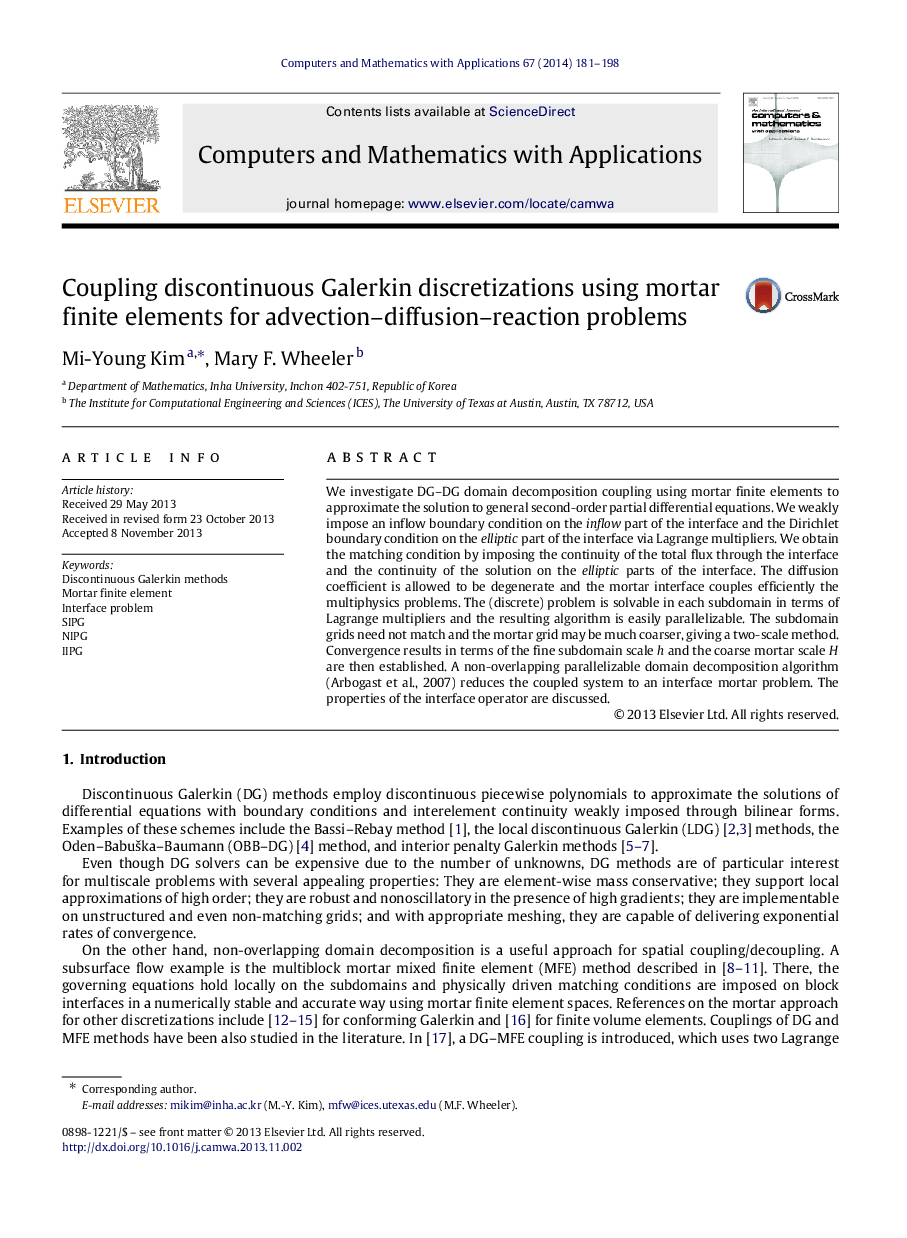| Article ID | Journal | Published Year | Pages | File Type |
|---|---|---|---|---|
| 470461 | Computers & Mathematics with Applications | 2014 | 18 Pages |
We investigate DG–DG domain decomposition coupling using mortar finite elements to approximate the solution to general second-order partial differential equations. We weakly impose an inflow boundary condition on the inflow part of the interface and the Dirichlet boundary condition on the elliptic part of the interface via Lagrange multipliers. We obtain the matching condition by imposing the continuity of the total flux through the interface and the continuity of the solution on the elliptic parts of the interface. The diffusion coefficient is allowed to be degenerate and the mortar interface couples efficiently the multiphysics problems. The (discrete) problem is solvable in each subdomain in terms of Lagrange multipliers and the resulting algorithm is easily parallelizable. The subdomain grids need not match and the mortar grid may be much coarser, giving a two-scale method. Convergence results in terms of the fine subdomain scale hh and the coarse mortar scale HH are then established. A non-overlapping parallelizable domain decomposition algorithm (Arbogast et al., 2007) reduces the coupled system to an interface mortar problem. The properties of the interface operator are discussed.
